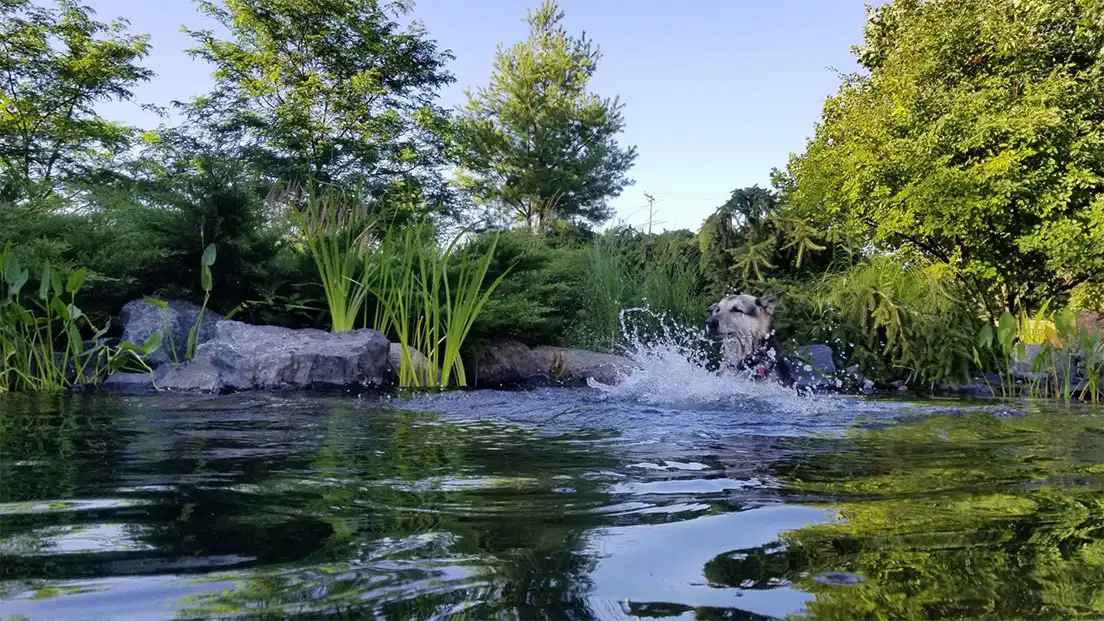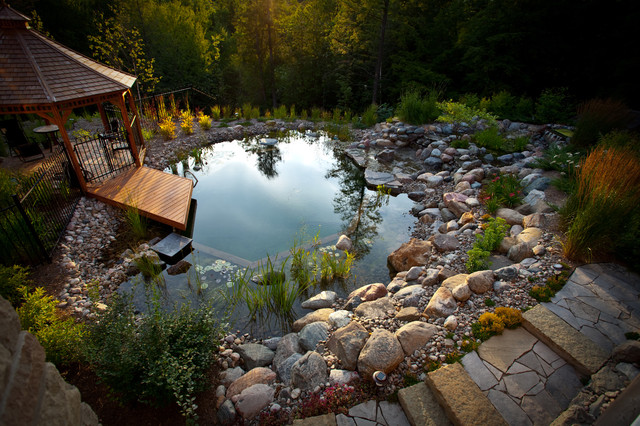The Beauty of Natural Pools
Natural pools, also known as swimming ponds or bio pools, are a stunning blend of nature and human ingenuity. They offer a refreshing alternative to conventional chlorine-treated pools by using natural processes to maintain crystal-clear water.
These pools not only provide a beautiful and serene swimming experience but also contribute to the environment by promoting biodiversity and reducing chemical use.
This article will explore the beauty of natural pools, their ecological benefits, design principles, and practical considerations for implementation.
The Ecological Benefits of Natural Pools
 Natural pools are celebrated for their environmental advantages. Unlike traditional pools that rely on chemicals for maintenance, natural pools use biological filtration systems that mimic natural bodies of water.
Natural pools are celebrated for their environmental advantages. Unlike traditional pools that rely on chemicals for maintenance, natural pools use biological filtration systems that mimic natural bodies of water.
These systems typically include a regeneration zone with aquatic plants and microorganisms that filter and clean the water. This approach offers several key ecological benefits:
Promoting Biodiversity
The regeneration zone of a natural pool creates a habitat for various plants, insects, and aquatic life. This biodiversity not only contributes to the health of the pool but also enhances the surrounding ecosystem.
Beneficial insects, like dragonflies, help control mosquito populations, while aquatic plants oxygenate the water and provide habitat for microorganisms that break down impurities.
Reducing Chemical Use
Traditional pools require significant amounts of chlorine and other chemicals to keep the water clean and safe. These chemicals can have adverse effects on both the environment and human health.
Natural pools, on the other hand, rely on natural filtration, drastically reducing the need for harmful chemicals. This results in cleaner, safer water for swimmers and less environmental pollution.
Conserving Water
Natural pools are designed to mimic natural water cycles, which can help reduce water waste. Unlike traditional pools that often require frequent draining and refilling to maintain water quality, natural pools maintain balance through biological processes, leading to more sustainable water use.
Designing a Natural Pool

Designing a natural pool requires a thoughtful blend of aesthetics, engineering, and ecological principles. Here are the key elements to consider when creating a natural pool:
Regeneration Zone
The regeneration zone is the heart of a natural pool's filtration system. This area is typically planted with a variety of aquatic plants that absorb nutrients and provide habitat for microorganisms.
The size of the regeneration zone is crucial and usually occupies about 30-50% of the total pool area. It should be designed to ensure optimal water flow and filtration.
Circulation System
A well-designed circulation system is essential for maintaining water quality in a natural pool. Water should flow continuously between the swimming area and the regeneration zone, ensuring that all water passes through the natural filtration process. This can be achieved using pumps and natural water movement principles.
Aesthetic Integration
Natural pools are not just functional but also a visual delight. They can be designed to blend seamlessly with the surrounding landscape, incorporating features like waterfalls, rock formations, and naturalistic planting. The goal is to create a space that feels like a natural oasis rather than a man-made structure.
Construction Materials
Choosing the right materials is vital for the longevity and sustainability of a natural pool. Natural stone, gravel, and clay are commonly used to create a natural look and feel.
The pool lining must be durable and environmentally friendly, often made from reinforced polyethylene or other non-toxic materials.
Practical Considerations for Natural Pools
While natural pools offer numerous benefits, there are practical considerations to keep in mind to ensure successful implementation and maintenance.
Initial Cost and Maintenance
Natural pools can have higher initial construction costs compared to traditional pools due to the complexity of their design and the need for specialized materials. However, long-term maintenance costs are typically lower because there is no need for expensive chemicals.
Regular upkeep involves maintaining the balance of the ecosystem, including plant care and occasional cleaning of the regeneration zone.
Climate and Location
The feasibility of a natural pool can be influenced by climate and location. In regions with harsh winters, special considerations must be made to protect the aquatic plants and ensure the pool's systems can withstand freezing temperatures.
Additionally, the pool should be located in an area that receives adequate sunlight to support plant growth.
Health and Safety
Natural pools are generally safe for swimming, but it's important to educate users about the natural filtration process and the role of plants and microorganisms. Regular water testing can help ensure the pool remains safe for swimmers. Additionally, proper design can minimize risks such as slippery surfaces and sharp edges.
Embracing the Beauty of Natural Pools
Natural pools represent a harmonious blend of human innovation and nature's wisdom. They provide a unique swimming experience that is not only aesthetically pleasing but also environmentally sustainable.
By embracing natural processes and promoting biodiversity, natural pools offer a refreshing escape from the chemical-laden waters of traditional pools. Whether you are looking to create a private backyard oasis or a public swimming facility, natural pools are a testament to the beauty and resilience of nature.
In conclusion, the beauty of natural pools lies in their ability to create a sustainable and harmonious environment that benefits both people and nature. By understanding the ecological principles behind these pools and considering the practical aspects of their design and maintenance, you can create a natural swimming experience that is both enchanting and eco-friendly.
Sources
- Natural Swimming Pools: Living Water
- The Benefits of Natural Pools
- How to Design a Natural Pool
- Natural Pool Maintenance
- Ecological Benefits of Natural Pools
- Natural Pools: The Future of Swimming
- Natural Pools and Their Environmental Impact
- Creating a Sustainable Natural Pool
- The Art of Natural Pools
- Health and Safety in Natural Pools











![[LIVE] Engage2Earn: Save our PBS from Trump](https://cdn.bulbapp.io/frontend/images/c23a1a05-c831-4c66-a1d1-96b700ef0450/1)











![[ℕ𝕖𝕧𝕖𝕣] 𝕊𝕖𝕝𝕝 𝕐𝕠𝕦𝕣 𝔹𝕚𝕥𝕔𝕠𝕚𝕟 - And Now What.... Pray To The God Of Hopium?](https://cdn.bulbapp.io/frontend/images/79e7827b-c644-4853-b048-a9601a8a8da7/1)


































